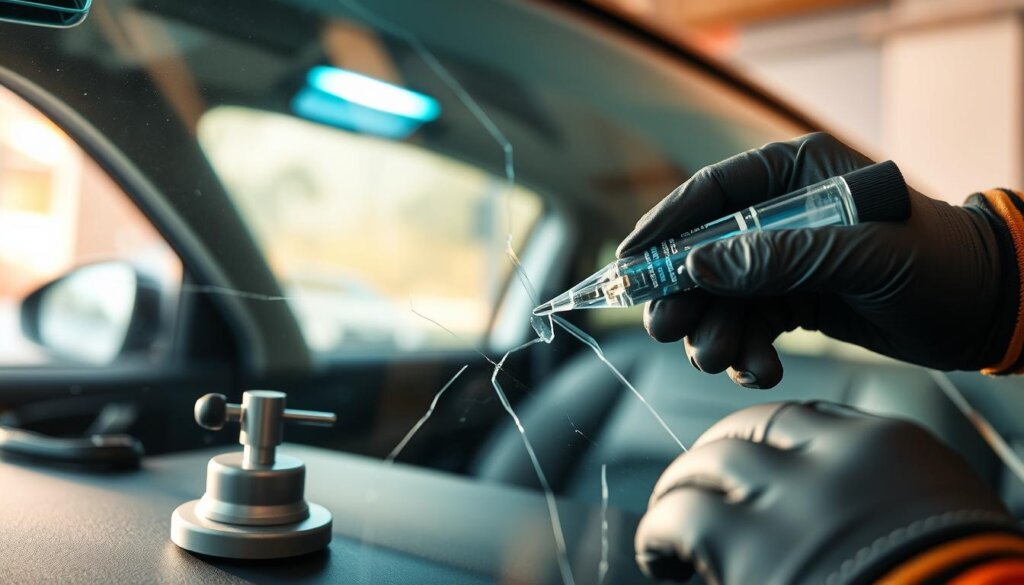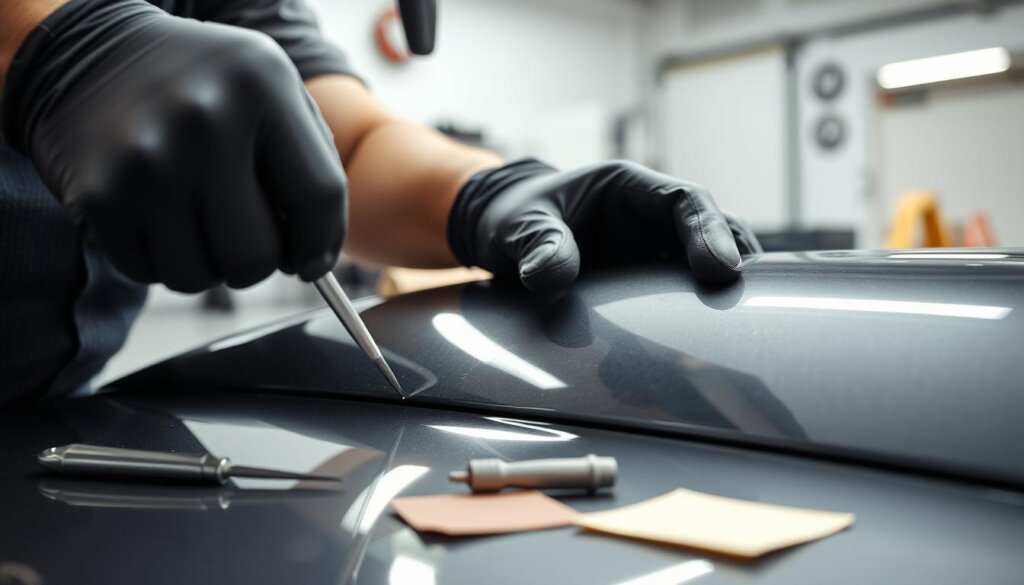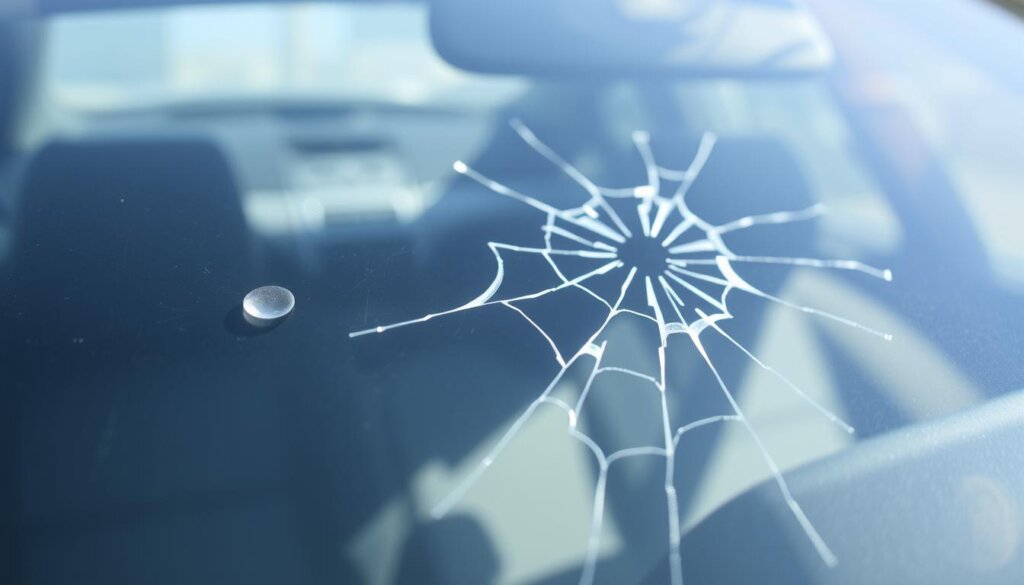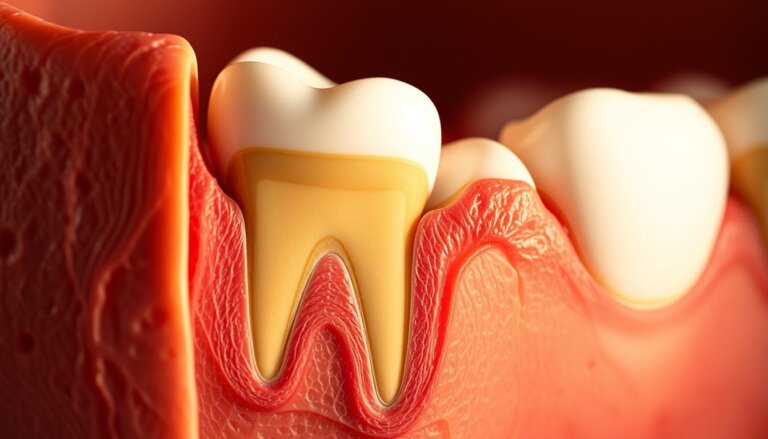Minor Chip vs Major Break Repair Explained
Studies show over half of structural damages start small. These small issues can lead to big problems. It’s important to act fast, wondering how to fix a minor chip versus a major break?
Minor chips are usually just on the surface. Major breaks go deeper, weakening the whole structure. Mayo Clinic research shows even small chips can get worse if not fixed right away. This makes it key to get them checked and treated quickly.
Many ask, how do you fix a minor chip versus a major break? It’s about knowing the damage, picking the right materials, and understanding the impact on stability. We aim to share tips to stop damage and fix things properly.
Key Takeaways
- Acting fast can stop small chips from becoming big fractures.
- Minor chips only affect the surface, while major breaks go deeper.
- Quick medical care lowers infection risks and keeps structures strong.
- Treatment depends on how bad the break is and any complications.
- Fixing things quickly keeps them working well for a long time.
Understanding the Differences Between Chips and Breaks
A cracked surface can be a small flaw or a deep fracture that affects the inside layers. Dental experts say small cuts in the enamel might be easier to fix. But, deeper breaks can cause pain and bleeding. Knowing the difference helps plan the right treatment and avoid infections.

Definition of Minor Chips
Minor chips only affect the enamel, making a shallow crack. They might bother the tongue or gums but are usually fixable in one visit. This quick fix helps prevent bacteria buildup.
Definition of Major Breaks
Bigger fractures can reach the dentin or pulp, causing pain and bleeding. Dentists often need to do more for these cases, sometimes surgery. When damage goes deeper, treatments get more complicated.
Common Sources of Damage
Teeth can get hurt in many ways. Some common causes include:
- Accidents during sports or driving
- Habitual grinding during sleep
- Biting into very firm objects
Spotting a chip or break early helps take action fast. This keeps your mouth healthy.
Signs That a Repair Is Necessary
Spotting damage early is key. Even small issues can lead to bigger problems like tooth decay. Timely action stops infections and avoids major repairs.
Visual Indicators for Chips
Small chips might show as flaking enamel. Jagged edges can hurt your tongue and gums. Discoloration around the chip could mean deeper tooth problems.
Visual Indicators for Breaks
Big cracks go deeper than the surface. They might cause bleeding and pain. Missing parts of the tooth let bacteria in. Any break needs quick checking.
Functional Symptoms to Watch
Chewing can be hard sometimes. Hot or cold drinks might make your teeth hurt. Pain spreading to your jaw could mean a fracture. Watching for these signs helps avoid big fixes.
Common signs include:
- Dull throbbing in the gum area
- Sharp discomfort during biting
- Sudden tenderness while brushing

| Symptom | Possible Risk |
|---|---|
| Visible chip | Increased decay |
| Chunk fracture | Higher infection rate |
| Persistent pain | Underlying nerve damage |
The Repair Process for Minor Chips
Dental bonding and veneers are key for fixing chipped teeth. They use resin that looks and feels like real teeth. Dentists work carefully to make sure the repairs last and look right.
Tools and Materials Needed
To fix chips, dentists need special resin, a conditioning liquid, and curing lights. They also use burs to smooth out the surface after it’s set. Each tool is chosen for its ability to match the tooth’s natural look.
Step-by-Step Repair Procedure
- First, they check the chip with the eye or X-rays.
- Then, they clean and roughen the area for bonding.
- Next, they apply a conditioning agent to prepare the surface.
- They shape the resin to fit the tooth and surrounding teeth.
- After, they cure the resin with light until it hardens.
- Lastly, they polish the tooth for a smooth finish.
Time Required for Repair
Most repairs take less than an hour. This quick fix helps keep your smile looking good without interrupting your day.
The Repair Process for Major Breaks
Big cracks need careful work and might need crowns, root canals, or implants. Dentists use special scans to see inside before fixing big breaks. They aim to fix the tooth and keep as much of it as they can.
Tools and Materials Needed
- Special drills for precise removal of fractured sections
- Endodontic files to eliminate infected canal tissue
- High-grade restorative materials such as porcelain or ceramic
- Core buildup resin and sealing agents
Step-by-Step Repair Procedure
- Obtain detailed images to assess fracture depth and nerve involvement.
- Eliminate decayed or broken tooth segments.
- Execute a root canal if the pulp is compromised, followed by gutta-percha filling.
- Apply a build-up post or core to reinforce structural support.
- Shape the tooth and fit a crown designed for long-term protection.
- Adjust bite alignment to ensure comfortable function.
Time Required for Repair
Most repairs take several visits, mainly for crowns made in a lab. Each step is important for fixing the tooth right and making sure it feels good.
Cost Comparisons: Chips vs Breaks
The cost of fixing chips or breaks depends on several things. These include how complex the repair is, the materials used, and the dentist’s skill. A small chip might just need a simple fix, while a big break could require more work like crowns or implants.
Understanding these factors is key for both dentists and patients. It helps them make the best choices together.
Factors Influencing Repair Costs
When deciding on a repair, dentists consider a few things. They look at the type of imaging used, the dentist’s qualifications, and the materials chosen. For example, some materials like resin composite or porcelain might cost more.
Some clinics might charge extra if they need to use anesthesia or if surgery is needed. Each case is different and needs a careful look.
Average Cost Estimates
Fixing a small chip usually costs a few hundred dollars. But, a big break can cost a lot more, sometimes thousands of dollars. This is because it might need surgery or a root canal.
Here’s a rough idea of what you might expect to pay:
| Repair Type | Procedure | Estimated Cost Range |
|---|---|---|
| Minor Chip | Bonding or Contouring | $100–$600 |
| Major Break | Crown, Possible Implant | $800–$3,000+ |
Insurance Coverage Considerations
Insurance usually helps with treatments that are medically necessary. But, it might not cover cosmetic changes fully. It’s important to check your policy and get any needed pre-authorizations.
Durability of Repairs: Chip vs Break
Reliability is key when fixing minor damage. Each method has benefits that improve performance and comfort.
Longevity of Chip Repairs
Bonded fillings or resin-based restorations can last a long time with regular dental visits. They often last for years, but might need touch-ups to look and work well.
Longevity of Major Break Repairs
Crowns or strong materials protect teeth from wear and tear. They can last a decade or more with good oral care. They prevent further damage and keep the tooth strong.
Factors Affecting Repair Durability
Things like grinding, diet, and care can affect how long repairs last. Simple steps can help repairs last longer. Each step helps achieve the best results from minor fixes.
- Wear a night guard if bruxism is present
- Schedule routine cleanings with a dental professional
- Limit intake of hard foods that could strain the restoration
| Type of Restoration | Typical Lifespan | Key Maintenance Steps |
|---|---|---|
| Bonded Filling | 5–7 years | Regular polishing and checkups |
| Crown | 10+ years | Consistent oral hygiene and controlled biting forces |
When to Choose Repair Over Replacement
Choosing between fixing or replacing a tooth can greatly affect your future dental health. If your tooth is stable, a simple fix might be better than pulling it out. This method keeps more of your natural tooth and avoids big surgeries.
Evaluating Repair Viability
Dentists check how much enamel and gum you have before deciding what to do. They look at:
- Stable foundation assessment
- Presence of decay or infection
- Likelihood of sustaining biting forces

Cost-Benefit Analysis
Getting treatment right away can save you time and money. Quick fixes are usually less painful than big repairs. Most people find that early treatment avoids costly and time-consuming procedures later on.
Importance of Timely Repairs
The American Dental Association says not fixing damage can lead to worse problems. Acting fast stops bigger issues like tooth fractures or decay. If your tooth is badly damaged, fixing it is key. But, many problems can be solved with quick care before they get worse.
DIY Repair Options for Minor Chips
Minor surface damage can be fixed at home with simple remedies. These methods offer quick relief for those who can’t see a dentist right away. It’s important to know the difference between chips and breaks to choose the right fix.
Recommended Techniques and Kits
Resin fillers and dental wax are two common DIY options. Resin fills in chipped areas for a smooth finish. Dental wax covers sharp edges to ease discomfort. Using these kits correctly is key to success.
| Kit Type | Description |
|---|---|
| Resin Filler | Designed to bond directly to chipped areas for a temporary seal |
| Dental Wax | Helps shield cuts and scrapes by covering sharp surfaces |
Pros and Cons of DIY Repair
- Cost savings for those on tight budgets
- Convenience when scheduling constraints arise
- Risk of inadequate coverage if cracks run deep
- Potential to exacerbate misalignment with improper use
Safety Precautions to Consider
Be careful not to overfill cracks or corners. Watch for signs of ongoing discomfort. Store materials as instructed to keep them effective. If pain persists or returns, see a dentist. These steps can help avoid complications and improve results.
Professional Repair Services for Major Breaks
Big damage often needs more than a simple fix. Deep cracks might cause serious problems, like bleeding or pain. Experts check every part of the tooth or structure carefully to fix it safely.

When to Consult a Professional
See a dentist right away if the crack is deep or touches the nerve. They use special tools to find hidden problems. This helps avoid more damage and pain.
Advantages of Professional Repairs
Getting help from experts has many benefits:
- They use special tools to find hidden cracks
- They create plans just for you
- They help you heal and feel better
Choosing the Right Service Provider
Look for clinics that are part of groups like the American Dental Association. They show they know what they’re doing. Reading what others say can help you find a good place for your repairs.
Preventative Measures to Avoid Damage
Regular checks and smart choices can lower the chance of cracks or breaks. This is good for those at higher risk, like people who grind their teeth or athletes in contact sports.
Routine Inspections and Maintenance
Regular checks help find wear early, stopping small problems from getting bigger. Dentists often catch early signs during regular visits. Night guards help protect against grinding and cushion teeth from stress.
Materials and Tools to Protect Your Items
Mouthguards from trusted brands, like Shock Doctor, protect teeth from sudden hits. Strong dental composites strengthen weak spots. Some products make it easy to cover problem areas from constant rubbing.
Best Practices for Handling
Don’t use teeth to open packages. Hard things, like ice, can cause tiny breaks and weaken enamel. Cutting food into small pieces helps avoid putting too much pressure on teeth. These steps help keep teeth strong and prevent damage.
Environmental Factors That Impact Repairs
Climate and geography play big roles in repair success. Sudden temperature changes affect how fast repairs dry. High humidity also changes how materials bond.
These factors can make repairs harder, like fixing chipped or damaged surfaces.
Climate Considerations
Extreme dryness makes resin dry faster, but too much moisture weakens adhesives. Brands like 3M offer products that work well in changing weather. Choosing the right adhesive can avoid delays and prevent failures.
Location and Accessibility
In rural areas, getting to specialized care can be tough. This means small chips might get worse before they’re fixed. Delays can lead to infections if surfaces aren’t sealed properly.
Geography affects access to care in many ways:
- Distance from qualified professionals
- Shipping times for custom materials
Material Sensitivity
Resin composites can react to quick changes in weather. Porcelain is more stable but might need controlled temperatures. Quick action is key to successful repairs.
Long-Term Implications of Poor Repairs
Poor repairs can cause repeated discomfort and weaken structures. Cracks or cavities that are ignored often get worse. This can lead to serious problems that need big fixes.
Ignoring these issues can increase the risk of losing teeth. Early, careful repairs can help keep teeth working well and avoid long-term pain.
Risks of Inadequate Repairs
Bad repairs make structures weaker. They create small gaps where bacteria can grow. This makes things worse and may need more serious treatments later.
Safety Concerns
Unstable edges can cause injuries. They can hurt tissues. Bacteria can get in and harm your health, affecting more than just your mouth.
Financial Consequences
Going back for more repairs costs a lot. It can be more expensive than fixing it right the first time. This can lead to big financial stress and might mean more expensive treatments later.
Future Trends in Repair Techniques
Experts in many fields are exploring new ways to fix things better and longer. Digital impressions get all the details right. Computer-aided design makes planning easier and cuts down on time.
3D printing and special software are making parts faster. New materials are strong and safe for our bodies. They also don’t harm the environment as much.
Innovations in Repair Technology
Big names like Stratasys and 3M are leading the way. They make fixing things more efficient and accurate. This means better results for complex repairs.
Sustainable Repair Methods
Now, we’re focusing on fixing things without waste and using materials that can break down. Scientists are working on new mixes that use less and are better for the planet. These steps help us stay healthy and keep things strong.
The Rise of Smart Repair Solutions
Now, we can track how things are doing before they break. This helps in fixing things faster and better. It’s a big step towards making repairs safer and more effective everywhere.
Conclusion: Repairing Chips and Breaks Effectively
Getting chips and breaks fixed early is key. Our team uses medical science to plan and choose the right materials. This way, we keep your teeth working well and looking good.
Summary of Key Points
Our experts focus on keeping the tooth’s core strong. Small chips might need simple fixes, but big breaks require more work. Catching problems early helps avoid bigger issues and keeps your teeth stable.
Regular dental visits and the right materials help protect your teeth. This way, you can avoid more damage.
Encouragement for Timely Repairs
Fixing chips and breaks quickly leads to better results. It saves money and prevents bigger problems. It also makes you feel more confident about your smile.
Final Thoughts on Repair vs Replacement
Choosing repair over replacement often works well. It keeps your tooth’s structure and function intact. Quick action and careful planning mean less pain, lower costs, and better health for your teeth.
Don’t delay when you can act fast to protect your teeth. It’s a smart move for your smile’s health and function.






